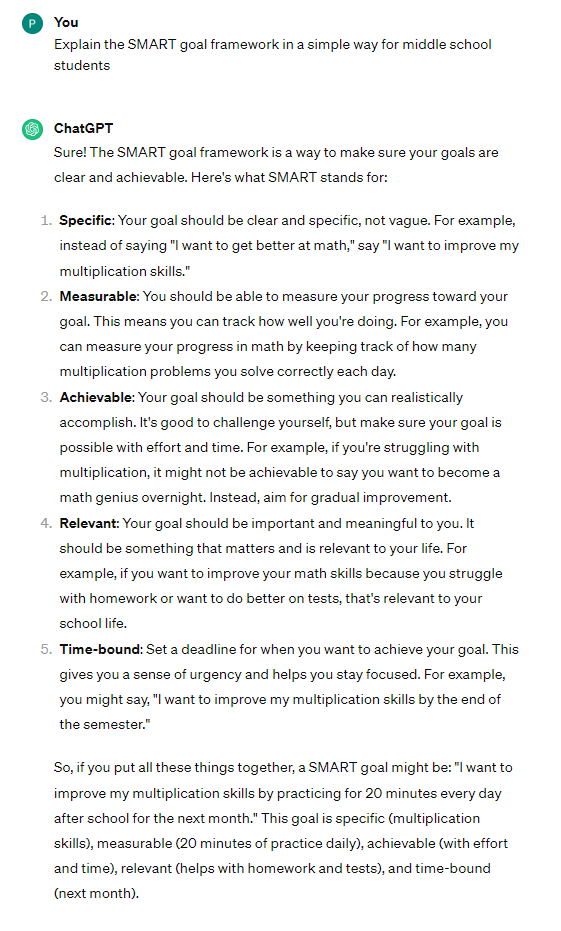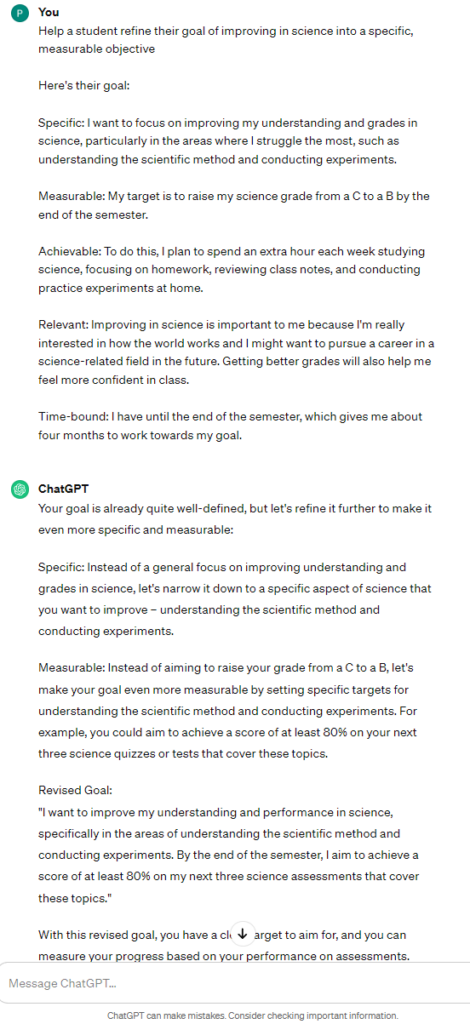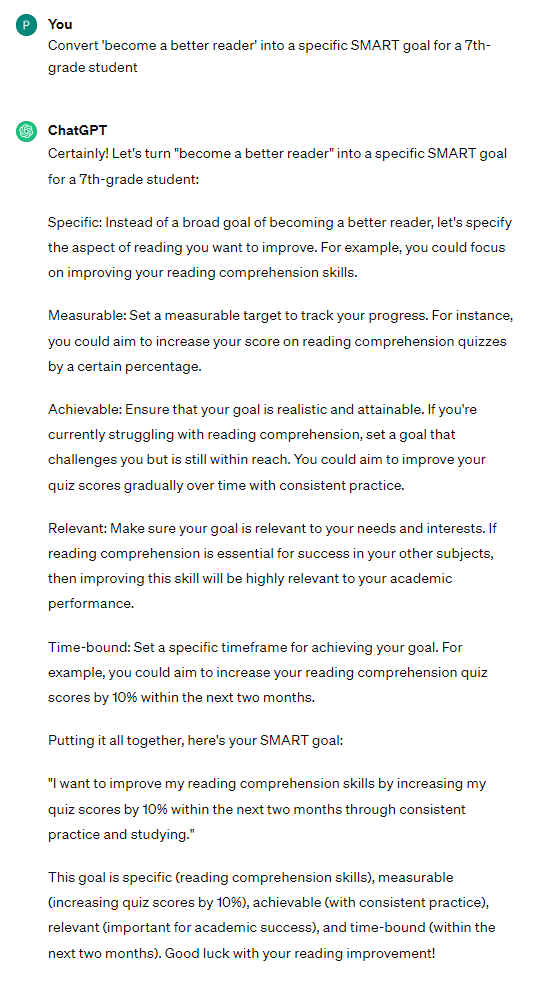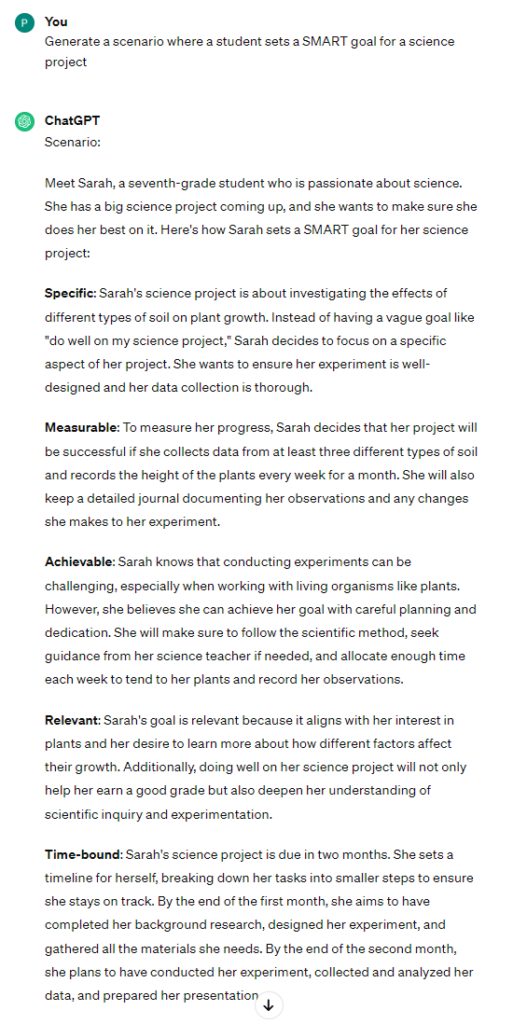🛑 Understanding SMART Goals: A Basic Overview
Before diving into the AI aspect, let’s break down what SMART goals are. These goals are:
- Specific: Clear and well-defined.
- Measurable: With specific criteria to measure progress.
- Achievable: Realistic and attainable.
- Relevant: Aligned with broader objectives.
- Time-bound: With a clearly defined timeline.
Why would it be useful to explain SMART goals to students?
Explaining SMART goals to students is useful because it helps them set clear and achievable objectives. When students understand these principles, they can better plan and track their progress in school and life.
It encourages them to be specific about what they want to accomplish, measure their success, ensure their goals are realistic, relevant to their aspirations, and set deadlines for achieving them.
This approach not only improves their academic performance but also teaches them valuable life skills in goal setting and time management, setting them up for success in the future.
Try this prompt: “Explain the SMART goal framework in a simple way for middle school students.”

So how does AI enter the conversation of goal-setting?
- Whole-Class Interactive Sessions: Use AI to facilitate class-wide discussions on goal setting.
- Personalized Learning: In one-on-one sessions, explore individual goals using AI as a guide.
- Student-Led Inquiry: Allow students to independently interact with AI, formulating and refining their goals.
✅ Interactive AI Lessons on SMART Goals
Incorporate ChatGPT in your teaching to make learning about SMART goals engaging and interactive.
- Group Discussions with AI: Display ChatGPT on a screen during class discussions to explain and explore SMART goals. Try this prompt: “Explain why each element of the SMART framework is important for goal setting.”

- One-on-One AI Conversations: In individual sessions, use ChatGPT to help students refine their goals. Try this prompt: “Help a student refine their goal of improving in science into a specific, measurable objective.”

✅ From Aspirations to SMART Goals: Interactive Steps
Use AI to transform vague aspirations into concrete SMART goals.
- Collaborative Goal Refinement: Work together with students, using AI to turn broad goals into specific plans. Try this prompt: “Convert ‘become a better reader’ into a specific SMART goal for a 7th-grade student.”

- Self-Guided Learning: Encourage students to use AI independently to create and refine their goals. Try this prompt: “Create a template for students to develop their own SMART goals in personal development.”

✅ AI-Enhanced Goal Setting: Examples and Feedback
Utilize AI to provide examples and constructive feedback.
- Real-World Scenarios: Use AI to create relatable scenarios for setting and achieving goals. Try this prompt: “Generate a scenario where a student sets a SMART goal for a science project.”

- Progress Reviews: Regularly use AI to review and adjust student goals. Try this prompt: “Evaluate and provide suggestions to improve a student’s SMART goal related to learning a new language.”

Note: This guide was written with the help of ChatGPT.
